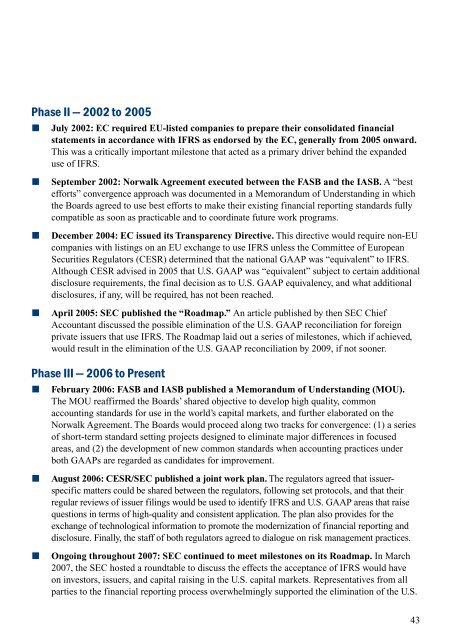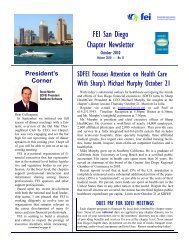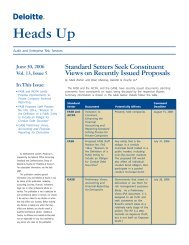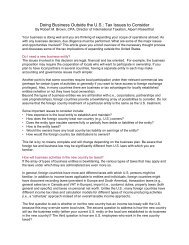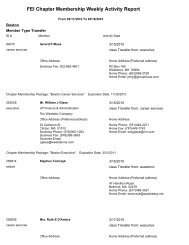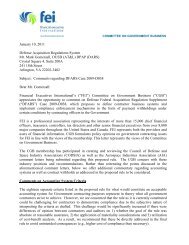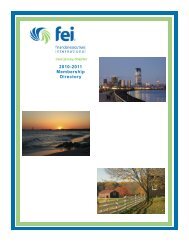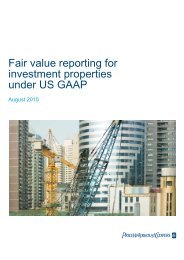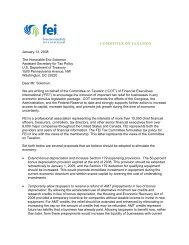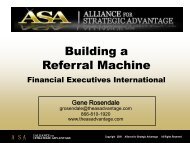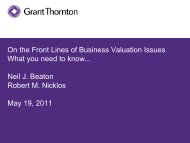U.S. GAAP v. IFRS: The Basics - Financial Executives International
U.S. GAAP v. IFRS: The Basics - Financial Executives International
U.S. GAAP v. IFRS: The Basics - Financial Executives International
Create successful ePaper yourself
Turn your PDF publications into a flip-book with our unique Google optimized e-Paper software.
Phase II — 2002 to 2005<br />
n July 2002: EC required EU-listed companies to prepare their consolidated financial<br />
statements in accordance with <strong>IFRS</strong> as endorsed by the EC, generally from 2005 onward.<br />
This was a critically important milestone that acted as a primary driver behind the expanded<br />
use of <strong>IFRS</strong>.<br />
n September 2002: Norwalk Agreement executed between the FASB and the IASB. A “best<br />
efforts” convergence approach was documented in a Memorandum of Understanding in which<br />
the Boards agreed to use best efforts to make their existing financial reporting standards fully<br />
compatible as soon as practicable and to coordinate future work programs.<br />
n December 2004: EC issued its Transparency Directive. This directive would require non-EU<br />
companies with listings on an EU exchange to use <strong>IFRS</strong> unless the Committee of European<br />
Securities Regulators (CESR) determined that the national <strong>GAAP</strong> was “equivalent” to <strong>IFRS</strong>.<br />
Although CESR advised in 2005 that U.S. <strong>GAAP</strong> was “equivalent” subject to certain additional<br />
disclosure requirements, the final decision as to U.S. <strong>GAAP</strong> equivalency, and what additional<br />
disclosures, if any, will be required, has not been reached.<br />
n April 2005: SEC published the “Roadmap.” An article published by then SEC Chief<br />
Accountant discussed the possible elimination of the U.S. <strong>GAAP</strong> reconciliation for foreign<br />
private issuers that use <strong>IFRS</strong>. <strong>The</strong> Roadmap laid out a series of milestones, which if achieved,<br />
would result in the elimination of the U.S. <strong>GAAP</strong> reconciliation by 2009, if not sooner.<br />
Phase III — 2006 to Present<br />
n February 2006: FASB and IASB published a Memorandum of Understanding (MOU).<br />
<strong>The</strong> MOU reaffirmed the Boards’ shared objective to develop high quality, common<br />
accounting standards for use in the world’s capital markets, and further elaborated on the<br />
Norwalk Agreement. <strong>The</strong> Boards would proceed along two tracks for convergence: (1) a series<br />
of short-term standard setting projects designed to eliminate major differences in focused<br />
areas, and (2) the development of new common standards when accounting practices under<br />
both <strong>GAAP</strong>s are regarded as candidates for improvement.<br />
n August 2006: CESR/SEC published a joint work plan. <strong>The</strong> regulators agreed that issuerspecific<br />
matters could be shared between the regulators, following set protocols, and that their<br />
regular reviews of issuer filings would be used to identify <strong>IFRS</strong> and U.S. <strong>GAAP</strong> areas that raise<br />
questions in terms of high-quality and consistent application. <strong>The</strong> plan also provides for the<br />
exchange of technological information to promote the modernization of financial reporting and<br />
disclosure. Finally, the staff of both regulators agreed to dialogue on risk management practices.<br />
n Ongoing throughout 2007: SEC continued to meet milestones on its Roadmap. In March<br />
2007, the SEC hosted a roundtable to discuss the effects the acceptance of <strong>IFRS</strong> would have<br />
on investors, issuers, and capital raising in the U.S. capital markets. Representatives from all<br />
parties to the financial reporting process overwhelmingly supported the elimination of the U.S.<br />
4


